Table of Contents
The three main types of dental implants are endosteal, sub periosteal, and zygomatic implants. Endosteal implants are the most common and are placed directly into the jawbone, making them strong and long-lasting. Sub periosteal implants sit on top of the jawbone but beneath the gums, ideal for patients with low bone density who cannot undergo grafting. Zygomatic implants are the least common and most complex, anchored in the cheekbone rather than the jaw, usually for cases of severe bone loss.
But beyond these three, many patients wonder: What are the different types of dental implants available today? Which option is right for me? Modern dentistry offers several implant solutions, including single-tooth implants, implant-supported bridges, molar implants, mini implants, and full-mouth options like All-on-4 or All-on-6. Each choice depends on your jawbone health, number of missing teeth, and cosmetic goals.This article will explain the different kinds of dental implants, highlight the best types for various cases, and cover essential factors such as recovery, risks, and costs.
By the end, you’ll understand all your teeth implant options, from front teeth procedures to denture-supported techniques, and be able to discuss with your dentist which type fits your needs best.
Three Types of Dental Implants
1. Endosteal Implants (Most Common)
- Placed directly into the jawbone.
- Shaped like small screws, cylinders, or blades.
- Best for patients with healthy jawbone density.
- Long-lasting and the most widely used option.
2. Subperiosteal Implants
- Placed on top of the jawbone but below the gum tissue.
- Recommended for patients with insufficient bone density who don’t want grafting.
Less common today but still useful in certain cases.
Read: How to relief pain from dental implant
3. Zygomatic Implants
- Anchored in the cheekbone (zygoma) instead of the jawbone.
- Used only in cases of severe jawbone loss.
- More complex and requires highly skilled surgeons.
Other Different Dental Implant
Single-Tooth Implants
Ideal for replacing one missing tooth.
Implant-Supported Bridges
Replace multiple missing teeth without needing one implant per tooth.
All-on-4 or All-on-6 Implants
Full-arch replacement using only 4–6 implants for a complete set of teeth.
Mini Dental Implants
Smaller implants often used for denture stabilization.
Molar Implants
Stronger implants designed for back teeth where bite force is greatest.
Read: Why Dental Implants are so Expensive
Which Type of Dental Implant is best
| Type | Placement | Best For | Notes |
| Endosteal | Into jawbone | Most patients with good bone | Most common & durable |
| Subperiosteal | On top of jawbone | Patients with bone loss | Avoids grafting |
| Zygomatic | Into cheekbone | Severe bone loss cases | Complex, specialized |
How Much Time Takes Healing from Dental Implants
- Short-Term Recovery (1–2 weeks): Swelling, mild pain, soft diet.
- Long-Term Recovery (3–6 months): Osseointegration (implant fuses with bone).
- Good oral hygiene and avoiding smoking help success rates.
Read: Why no dairy after dental implant surgery
Common Questions
Q1: How many types of dental implants are there?
There are 3 main types: endosteal, subperiosteal, and zygomatic.
Q2: What are the best types of dental implants?
Endosteal implants are the most common and durable option for most patients.
Q3: Can anyone get dental implants?
Most healthy adults can, but patients with uncontrolled diabetes, smokers, or those with severe bone loss may need special care.
Q4: What is the front teeth implant procedure like?
Front tooth implants follow the same process but often require extra precision for cosmetic appearance.
Q5: What is the recovery time after dental implants?
Healing can take 3–6 months, depending on bone health and implant type.
Q6: Are there different types of implants for dentures?
Yes — mini implants and All-on-4 implants are commonly used for denture support.
Have a Look:
Dental instruments, Dental Supplies, Dental hygiene, Surgical Instruments
Conclusion:
When it comes to different types of dental implants, the right choice depends on your bone health, number of missing teeth, and long-term goals. The 3 main dental implant types are endosteal, sub periosteal, and zygomatic, but modern dentistry also offers options like mini implants, implant-supported bridges, and full-mouth solutions. Always consult with a qualified dentist who uses advanced techniques and sterilized surgical instruments to ensure long-term success.

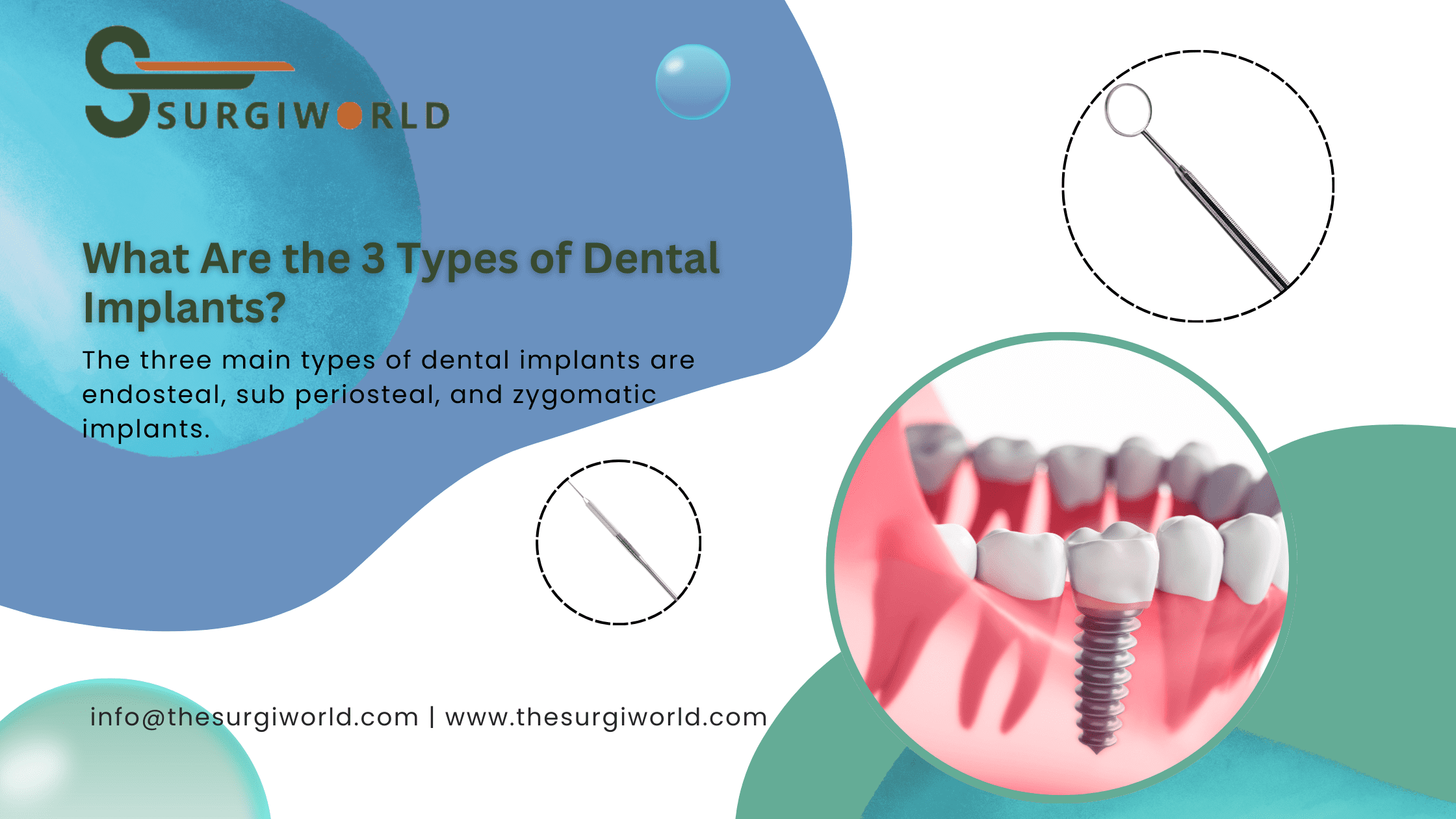
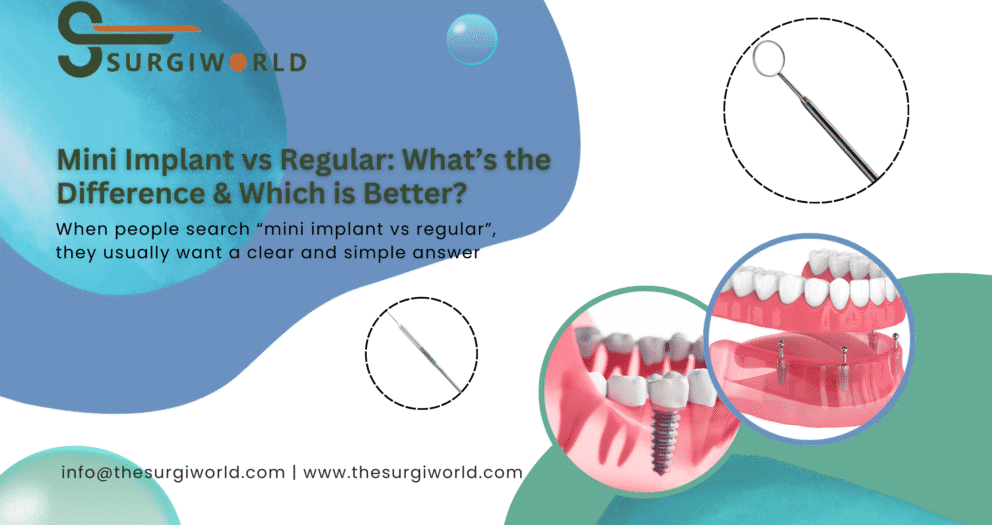
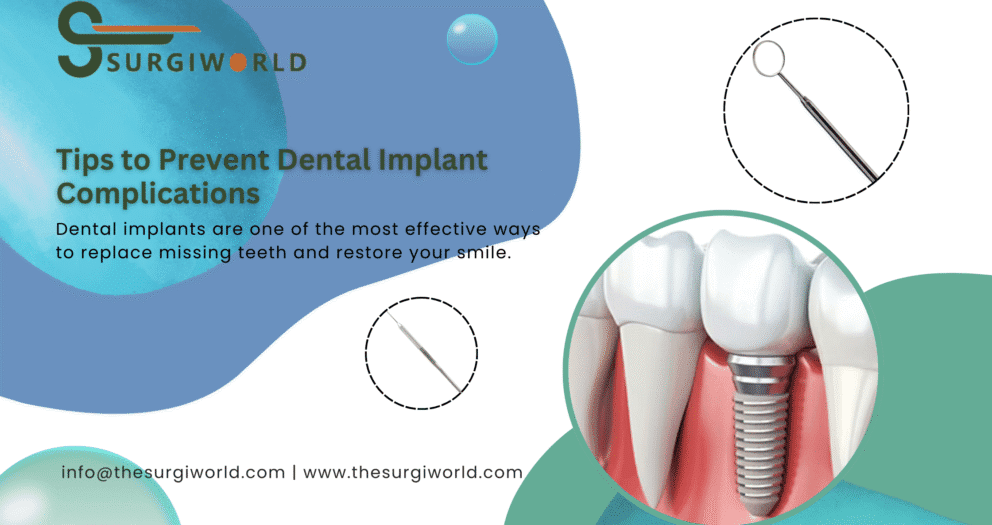
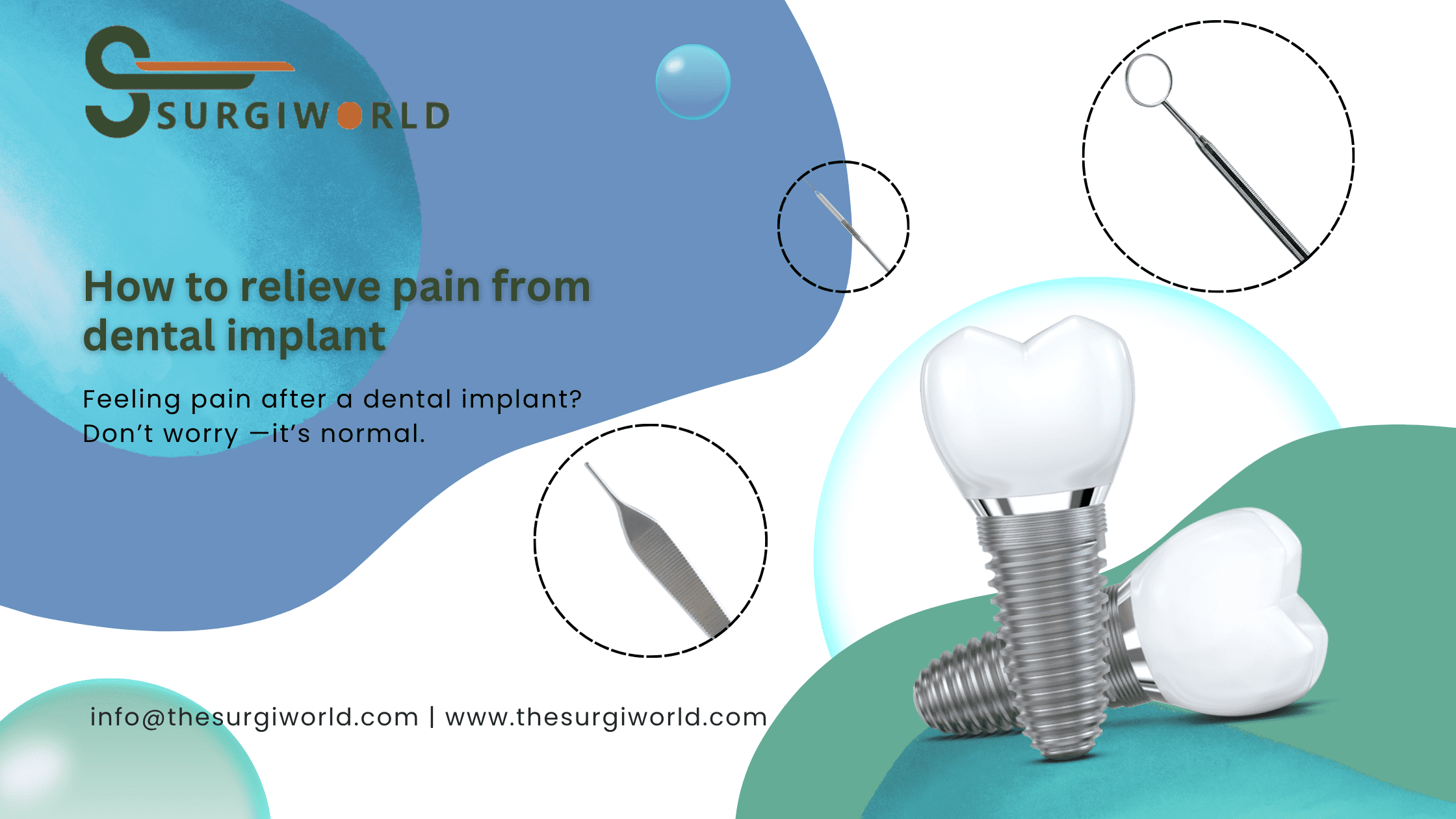
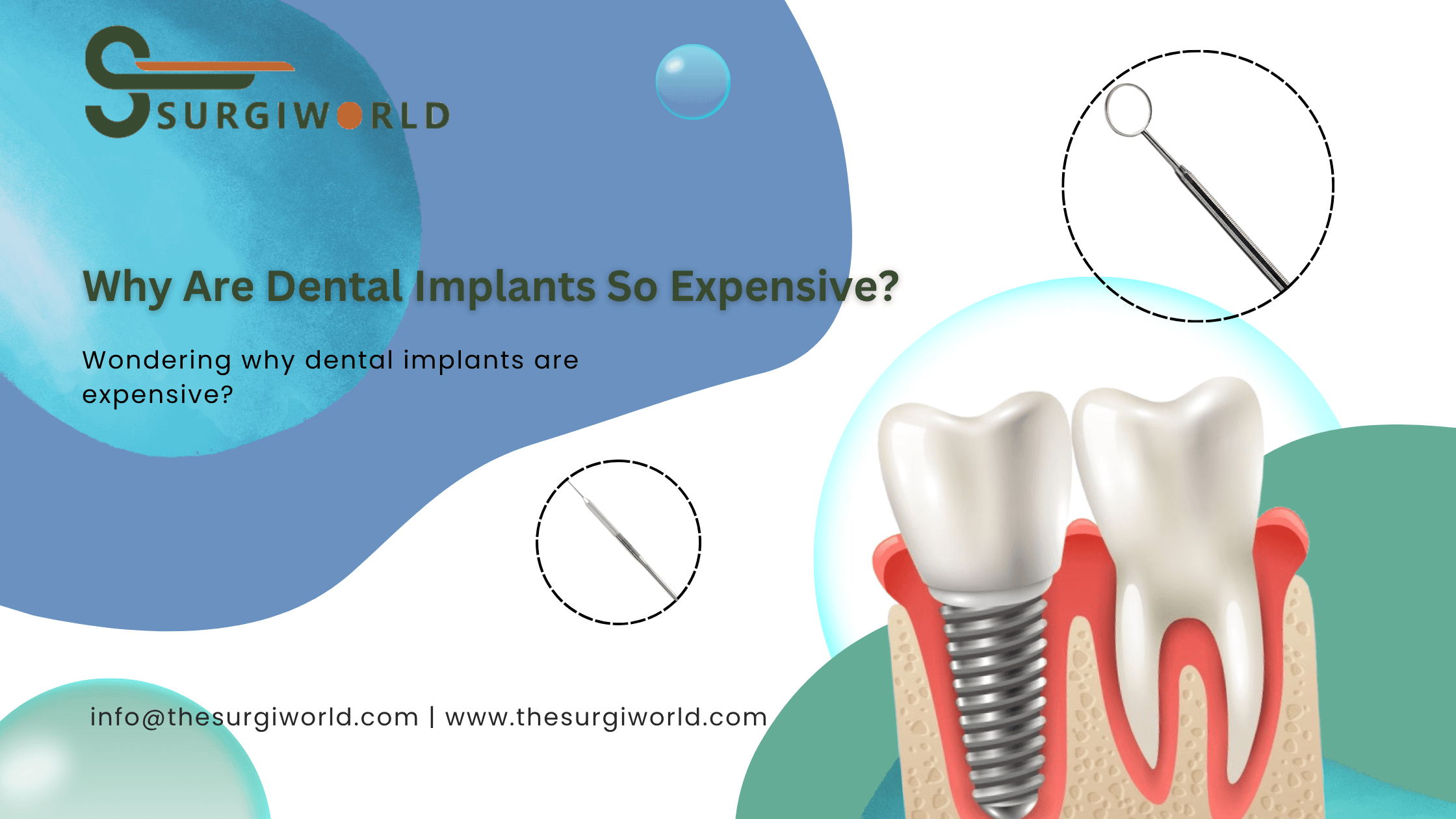

Write a comment
You must be logged in to post a comment.